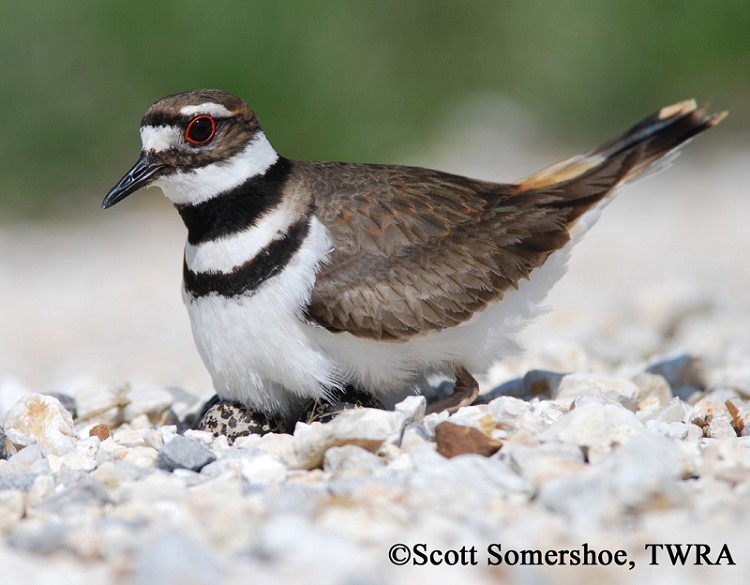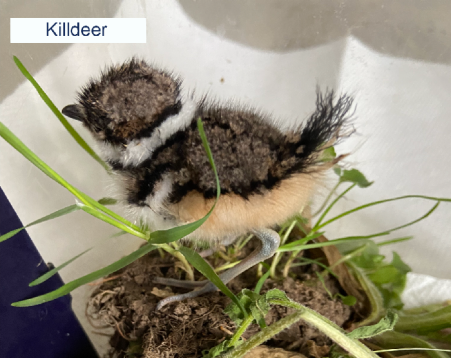Killdeer
Charadrius vociferus
Killdeers are the most widespread and familiar shorebird in North America because they take advantage of man-altered habitats like gravel roads, athletic fields, lawns, as well as mudflats near water. They are easily identified by the two dark bands on their chest, and the kill-deer call they give even in flight and after dark.
The breeding range of the Killdeer extends across Alaska and Canada south to southern Mexico, and in winter from southern Alaska across the upper U.S. south to northern South America.
Killdeers are common year round residents in Tennessee.
Description: The Killdeer is a medium-sized shorebird that is brown above, white below with two conspicuous black bands across the chest, and a bright orange rump visible in flight. It has a round head, large eye, short neck, and moderately long legs.
Males and females look alike.
Length: 10.5"
Wingspan: 24"
Weight: 3.3 oz
Voice: The call is a loud, piercing kill-deer. The call is given during the day, but also at night.
Similar Species:
- No other North American shorebird has two chest bands.
Habitat: Foraging habitat includes pastures, cultivated fields, athletic fields, airports, golf courses, gravel parking lots, sandbars, and mudflats. Common nest sites in Tennessee include pastures, recently plowed fields, lake and pond margins, gravel roads, parking lots, gravel rooftops, airports, and golf courses.
Diet: Terrestrial invertebrates, especially earthworms, grasshoppers, beetles and snails.
Nesting and reproduction: In Tennessee, the Killdeer has one of the longest breeding seasons of any breeding bird in the state nesting from late winter to mid-summer, and often raises two broods in one season.
Clutch Size: Usually 4 eggs, with a range of 3 to 5 eggs.
Incubation: Both adults incubate the eggs for 24 to 28 days. The male usually incubates at night.
Fledging: The young leave the nest within hours of hatching and are tended by both parents. They are independent at about 40 days.
Nest: The nest is a simple scrape on the ground made by the male in an open exposed area.
Status in Tennessee: The Killdeer is a common permanent resident across the state. The population appears to be increasing.
Fun Facts:
- The broken-wing distraction display performed by either parent is used to lure a predator away from nests or chicks. The adult drags its wings and tail acting like it is hurt and unable to fly. The adult moves gradually away from the nest, and once the predator is far enough away, it will fly off and return to a place near the nest.
- In order to keep cows and horses from stepping on a nest, an adult Killdeer will fluff itself up, fanning its tail over its head, and rush at the animal.
Obsolete English Names: kill-dee (This name is still commonly used in Tennessee)
Best places to see in Tennessee: Killdeer can be found in a variety of open habitats across the state including pastures, recently plowed fields, lake and pond margins, gravel roads, parking lots, gravel rooftops, airports, and golf courses.

